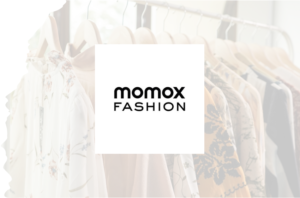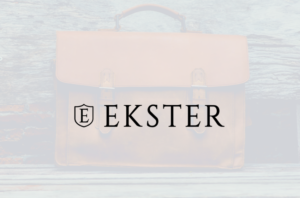The Growth of Online Shopping in the Fashion Industry
In recent years, the fashion industry has witnessed a monumental shift towards online shopping, revolutionizing the way consumers shop for clothing, accessories, and footwear. With the rise of e-commerce platforms and advancements in technology, online shopping has become increasingly popular, offering convenience, accessibility, and an unparalleled shopping experience. In this blog post, we’ll explore the significant growth of online shopping in the fashion industry, examining the factors driving this trend and the impact it has had on both consumers and retailers.

Convenience and Accessibility
One of the primary reasons for the growth of online shopping in the fashion industry is the convenience and accessibility it offers to consumers. With just a few clicks or taps, shoppers can browse through a vast array of products, compare prices, and make purchases from the comfort of their own homes or on the go. This convenience eliminates the need to visit physical stores, saving time and effort while allowing shoppers to access a wider selection of items from around the world.
Moreover, online shopping is available 24/7, allowing consumers to shop whenever it’s convenient for them, whether it’s during their lunch break, late at night, or on weekends. This accessibility caters to the busy lifestyles of modern consumers who value flexibility and convenience in their shopping experience. As a result, more and more shoppers are turning to online platforms to fulfill their fashion needs, driving the growth of e-commerce in the fashion industry.
Expanded Product Selection
Another key factor contributing to the growth of online shopping in the fashion industry is the expanded product selection available to consumers. Unlike physical stores limited by space constraints, online retailers can showcase a much broader range of products, including different styles, sizes, colors, and brands. This extensive selection allows shoppers to find exactly what they’re looking for, whether it’s a specific item from their favorite brand or a unique piece from a niche designer.
Moreover, online platforms often feature curated collections, trend guides, and personalized recommendations based on a shopper’s preferences and browsing history, making it easier for consumers to discover new styles and trends. This diversity and variety appeal to a wide range of tastes and preferences, attracting consumers who crave choice and individuality in their fashion purchases. As a result, online shopping has become a go-to destination for fashion enthusiasts seeking the latest styles and the hottest trends.
Seamless Shopping Experience
Advancements in technology have transformed the online shopping experience, making it more seamless, intuitive, and user-friendly than ever before. Today’s e-commerce platforms feature sophisticated search and filtering tools, allowing shoppers to quickly narrow down their options based on specific criteria such as size, color, price range, and more. This streamlined navigation enhances the shopping experience, making it easy for consumers to find what they’re looking for with minimal effort.
Moreover, many online retailers invest in features such as virtual try-on, augmented reality, and 360-degree product views, allowing shoppers to visualize how a garment will look and fit before making a purchase. These interactive features bridge the gap between the online and offline shopping experience, providing consumers with the confidence to buy clothing and accessories online without the need to try them on in person. Additionally, secure payment gateways and fast shipping options ensure that orders are processed quickly and efficiently, further enhancing the convenience and satisfaction of online shopping.
Social Media and Influencer Marketing
The rise of social media and influencer marketing has played a significant role in driving the growth of online shopping in the fashion industry. Platforms like Instagram, TikTok, and Pinterest have become powerful channels for discovering new fashion trends, brands, and products, with influencers and content creators sharing their favorite finds and styling tips with millions of followers.
Influencer collaborations, sponsored posts, and affiliate marketing partnerships have become common strategies for fashion brands and retailers to reach their target audience and drive sales. By partnering with influencers who align with their brand aesthetic and values, fashion companies can leverage their reach and influence to promote their products to a highly engaged and receptive audience.
Moreover, social media platforms have integrated shopping features such as shoppable posts, product tags, and in-app checkout, allowing consumers to seamlessly transition from browsing to purchase without leaving the platform. This integration of social commerce and online shopping has created new opportunities for brands to connect with consumers and drive conversions directly through social media channels.
Shift in Consumer Behavior
Overall, the growth of online shopping in the fashion industry can be attributed to a fundamental shift in consumer behavior and preferences. As digital natives and tech-savvy millennials and Gen Zers become the dominant demographic, their reliance on technology and digital channels for shopping continues to increase. These consumers value convenience, instant gratification, and the ability to research and compare products online before making a purchase decision.
Additionally, the COVID-19 pandemic accelerated the adoption of online shopping as lockdowns and social distancing measures forced brick-and-mortar stores to close temporarily. During this time, consumers turned to e-commerce platforms to fulfill their shopping needs, leading to a surge in online sales across all industries, including fashion. While some physical stores have since reopened, the shift to online shopping is expected to persist as consumers embrace the convenience and safety of shopping from home.

Conclusion
In conclusion, the growth of online shopping in the fashion industry has transformed the way consumers shop for clothing, accessories, and footwear. With its convenience, accessibility, expanded product selection, seamless shopping experience, and influence of social media and influencer marketing, online shopping has become the preferred method of purchasing fashion items for millions of shoppers worldwide. As technology continues to evolve and consumer behavior shifts towards digital channels, online shopping is poised to remain a dominant force in the fashion industry for years to come.




